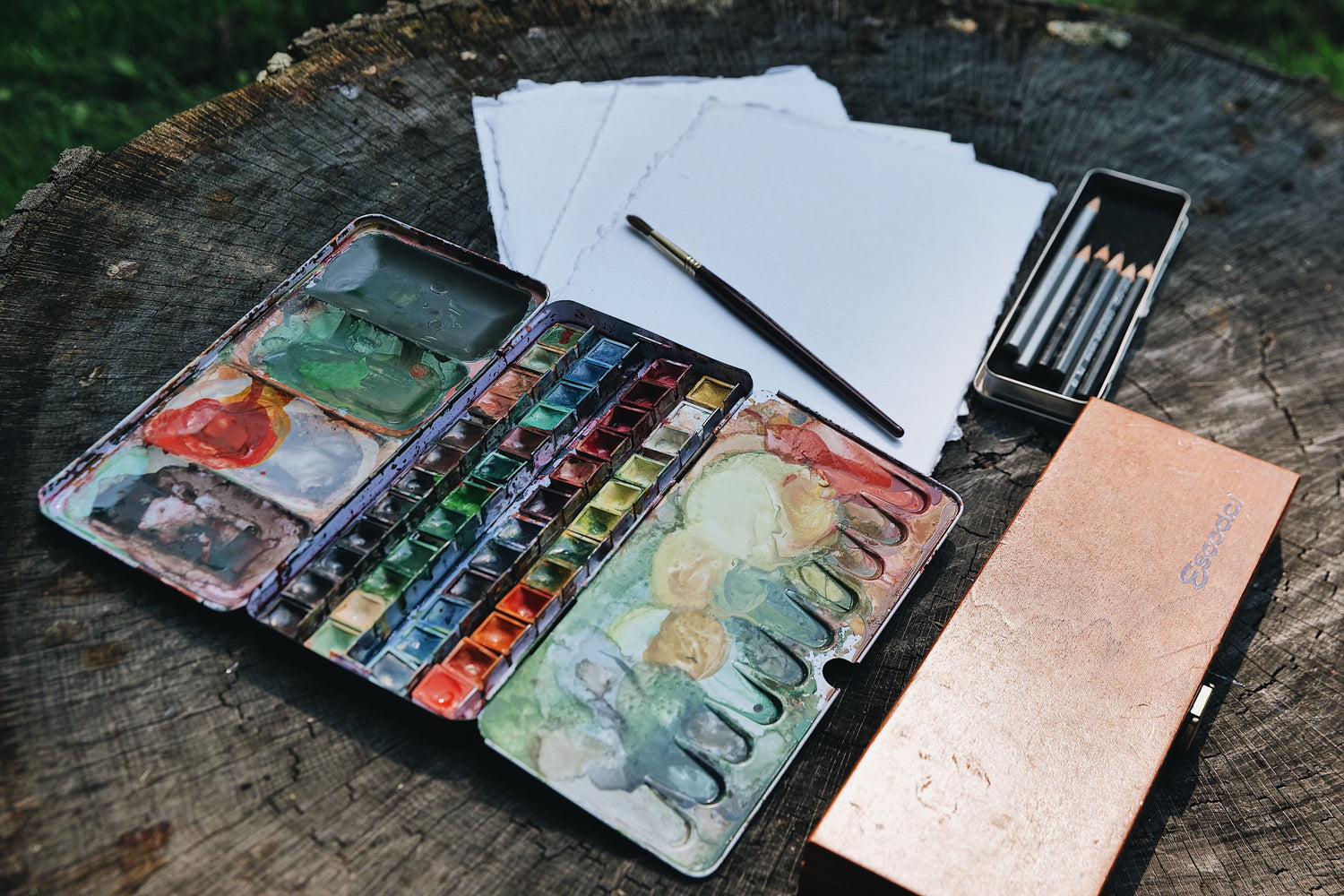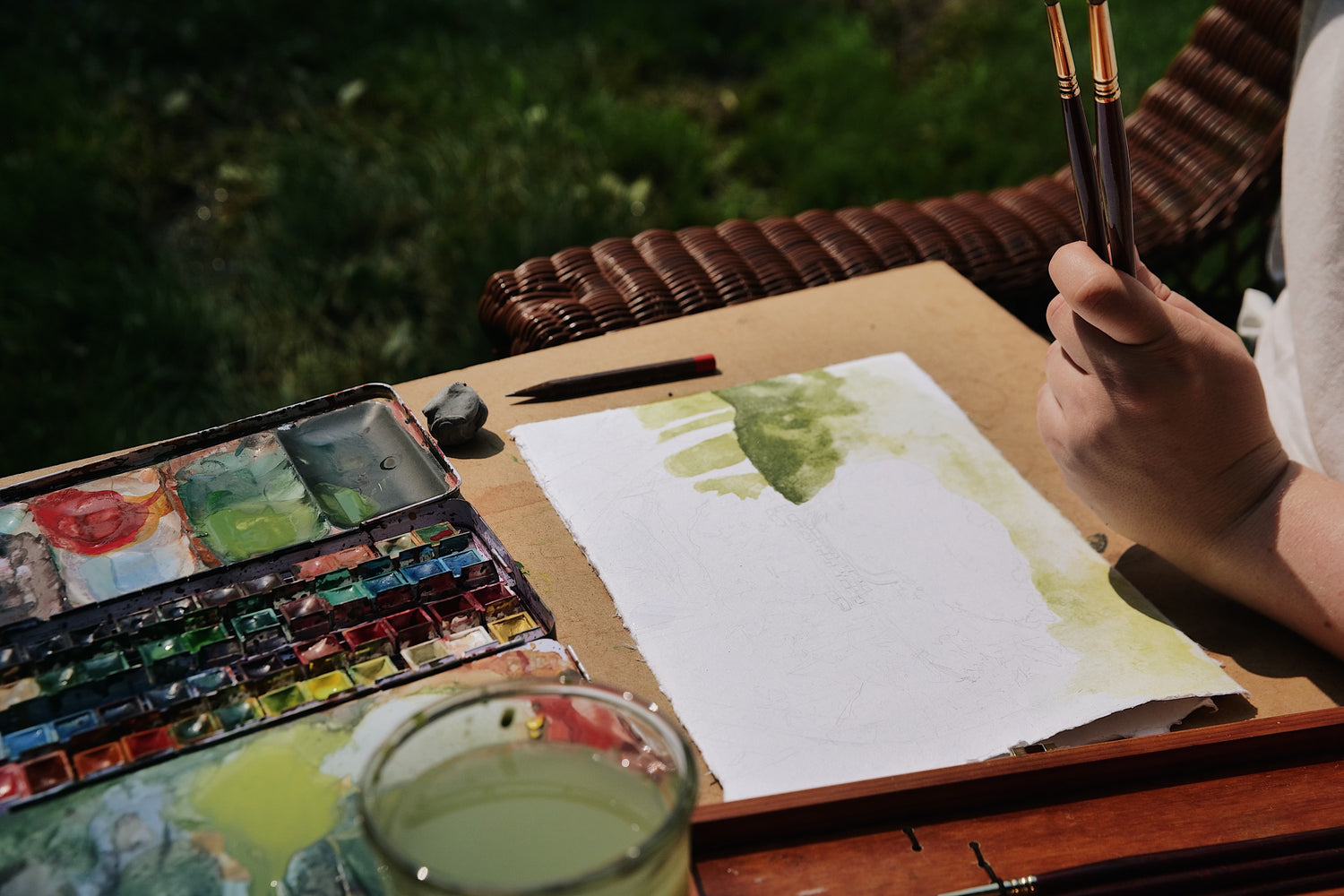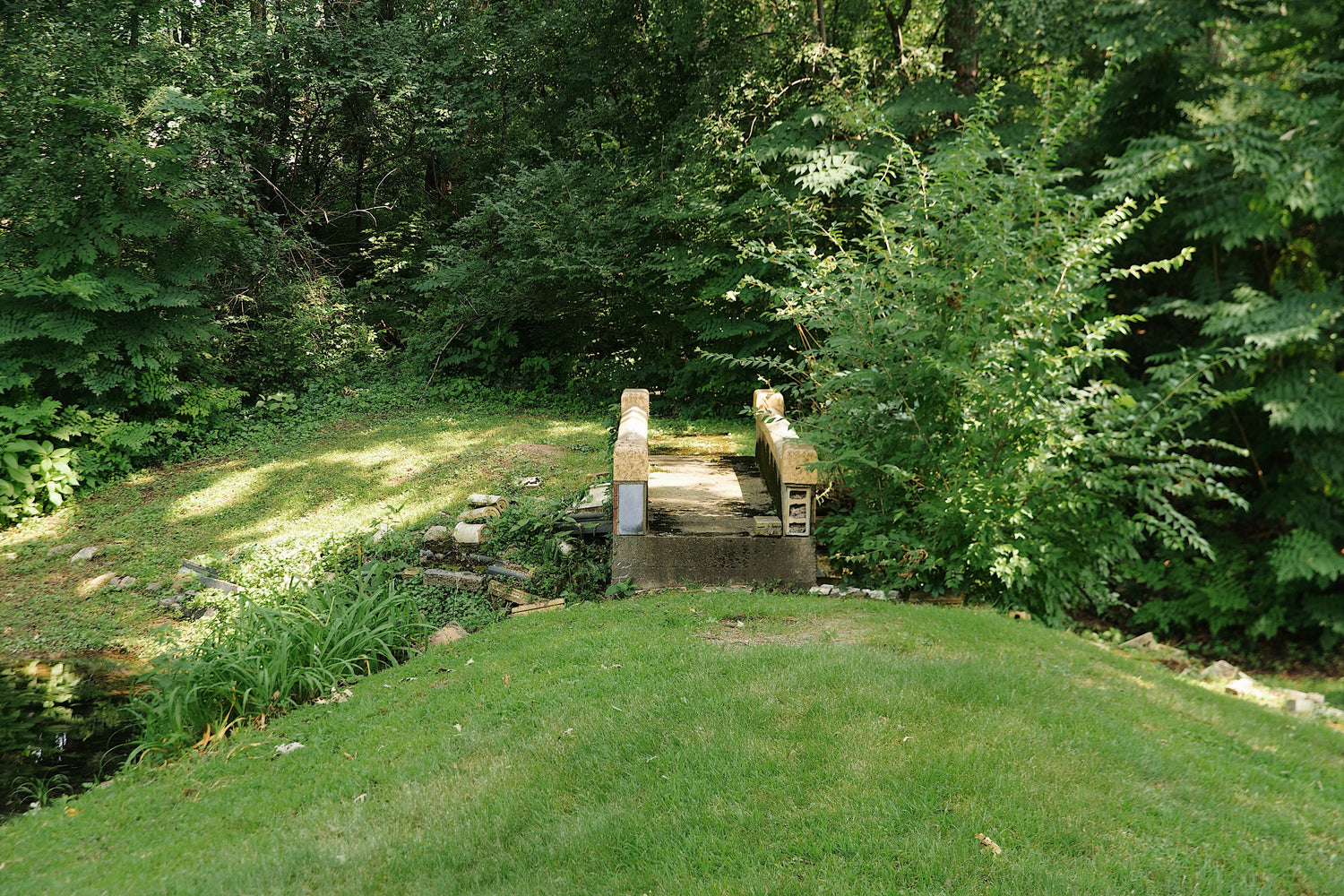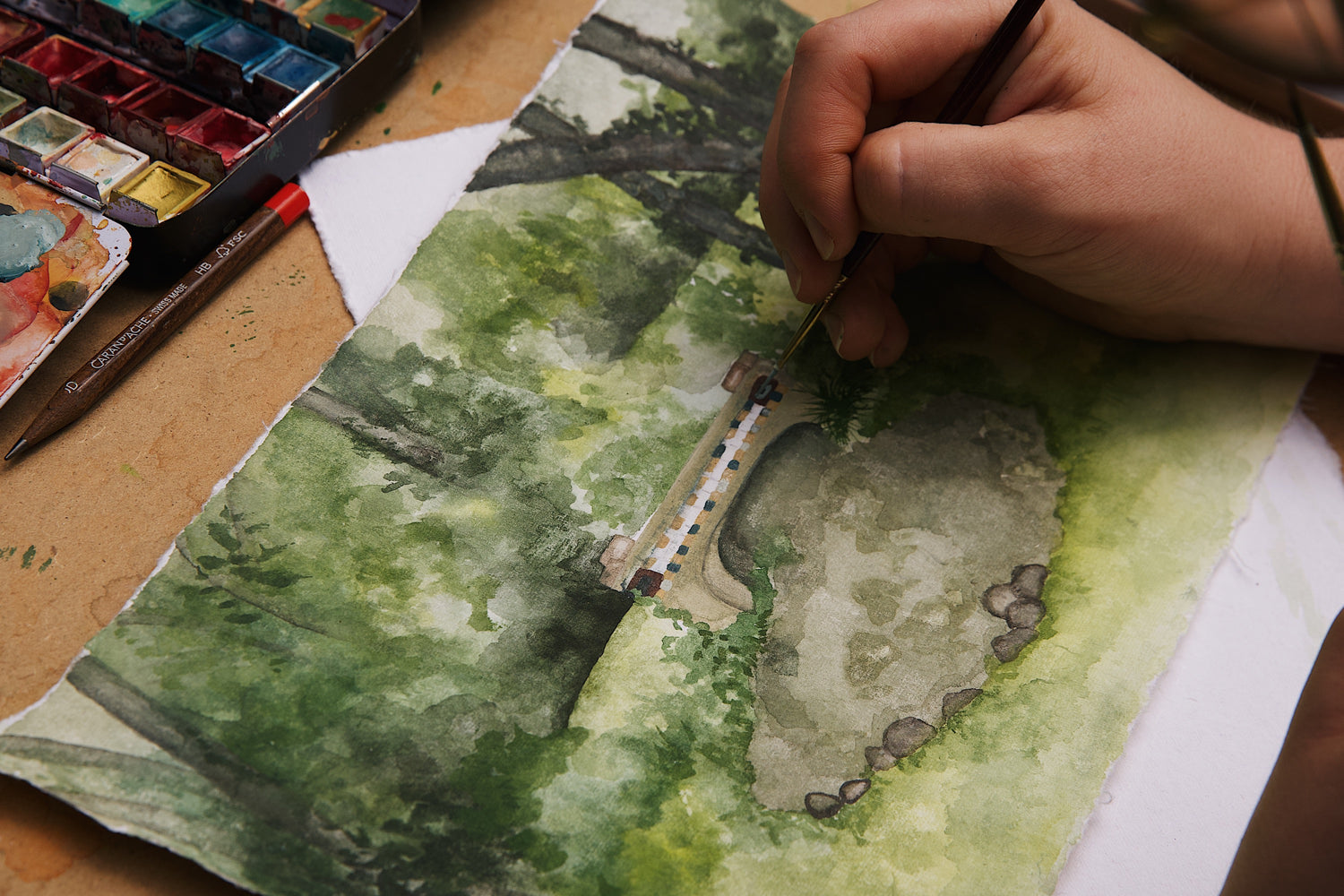"Eternal sunrise, eternal sunset, eternal dawn and gloaming, on sea and continents and islands, each in its turn, as the round earth rolls."
- John Muir
Spending time outdoors and witnessing the beauty of each season, month, and day, inspires a moment to sit, reflect, and create. Plein air painting is an art form all its own. The breeze, movement of clouds, and direction of the sun can all change your surroundings in a matter of moments. There's a flexibility and acceptance the artist must have to paint outdoors.
Artist and Martha Mae founder, Jean Cate, took to nature for an afternoon of plein air painting. Below is a video of her process, as well as some tips, tricks, and tools for painting outdoors. This is less of a tutorial, and more a musing on the beauty of painting in nature.
Enjoy.
Before you take to the outdoors, gather your supplies. Put together a kit that you can easily set up and travel with. Think about a painting surface - do you need to bring a drawing board or easel? Will you have access to a comfortable seat or should you bring a folding stool? A portable set allows for easy movement and simple cleanup.
For this portrait, we used:
- Horadam Watercolor Set
- Watercolor Brushes
- Grafwood Pencil Set
- Watercolor Paper
- Eraser
- Brass Pencil Sharpener
What location inspires you to create? An urban landscape, forest preserve, or body of water? Pick your place and follow your gut. When you arrive, observe your surroundings. Allow yourself a moment to be fully present. Let it sink in. Listen to the sounds. Feel the sun and know where it's going to move. Determine where you'll feel comfortable setting up to paint. Make sure you're in a place where you feel safe being alone. If you want to venture somewhere new, bring a friend or loved one with you. They can paint, take in nature, or read a book!
Once you choose your ideal setting, unload your art tools. Set up your seat, look at your subject, and adjust accordingly. If you're going to be there awhile, make sure you're comfortable before you begin. This will allow you to stay present and in a creative flow.
Prepare your palette and begin to map shapes on your paper. Draw lightly with pencil to determine your composition. Mark the most important perspective lines, but leave room to let your hand and brush interpret what you see.
As you begin to paint, start with primary forms and add in smaller details as you go. Lay the foundation first so that you have a scene to work off of if the light or wind shifts. Whether you're painting exactly what you see or an interpretation, embrace the possibility of change.
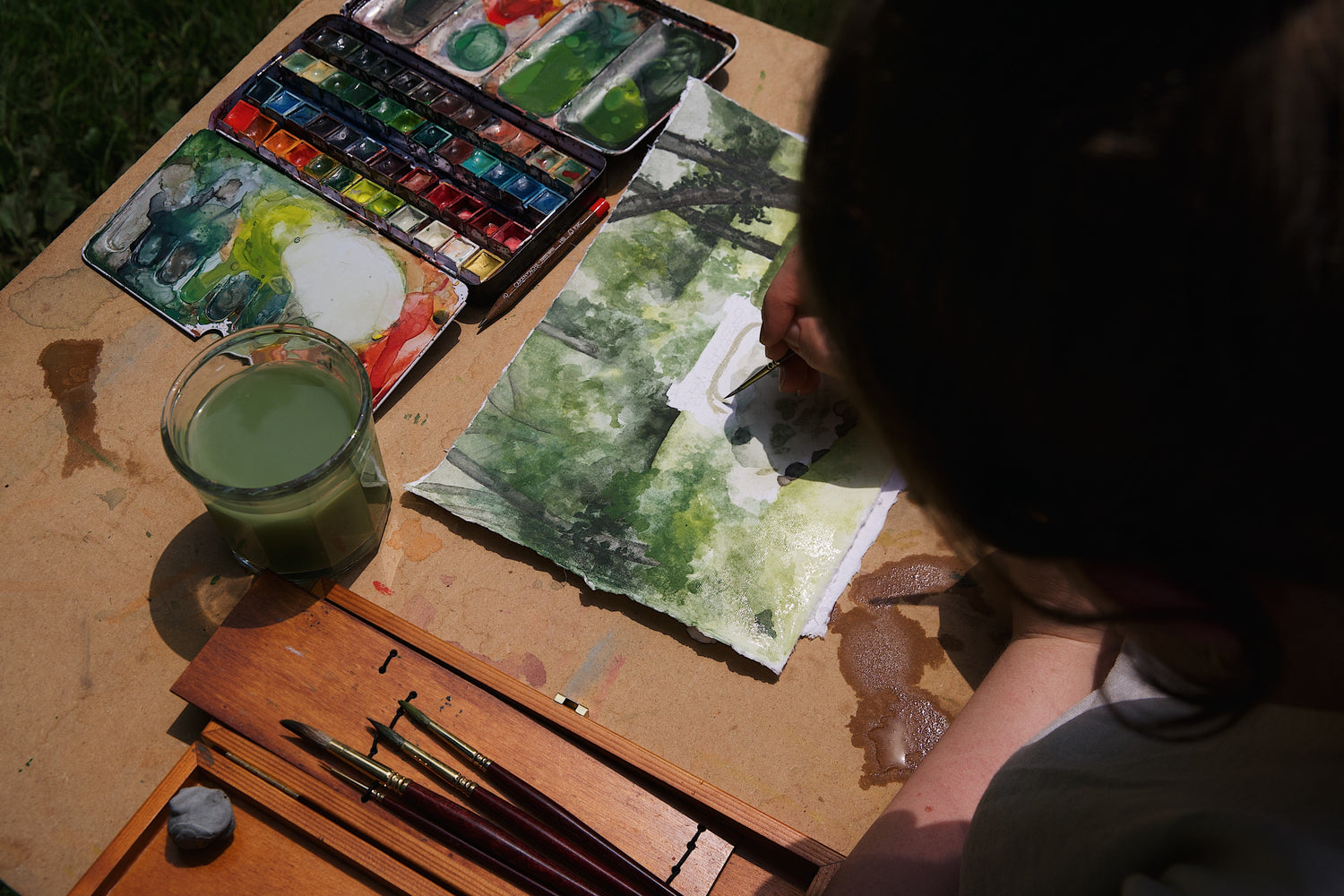
Plein air tip!
When you arrive to your location, prepare your palette. Take the time to mix your colors first so you can move quickly and deliberately once you begin painting. Pull in different shades of the same color. Mix some of your previous paint into the next color to create cohesion.
Since change or interruption can take place, capturing a moment in time is a nimble job.
Plein air painting can be a great solitary activity. The quiet allows for introspection and a real connection to your subject. But it can also be a community-centered activity, where you travel together and explore various facets of one location. A calming art form where you observe other people's take on a location.
Plan an outing with your friends or join a local painting group! There's so much we can learn from the people and world around us.
Plein Air Toolkit
-
Example product title
Regular price $19.99 USDRegular priceUnit price per -
Example product title
Regular price $19.99 USDRegular priceUnit price per -
Example product title
Regular price $19.99 USDRegular priceUnit price per -
Example product title
Regular price $19.99 USDRegular priceUnit price per


